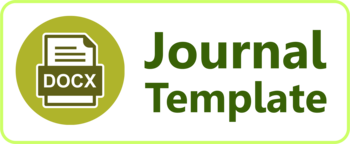KONSTRUKSI IDEOLOGI PEMERINTAH ATAS PRAKTIK RADIKALISME, ANARKISME DAN INTOLERAN OLEH ORMAS: SEBUAH PENDEKATAN TEKSTUAL DAN KRITIS
DOI:
https://doi.org/10.12928/mms.v2i1.3455Keywords:
Radicalism, Anarchism, Intolerance, Ideology, Critical Discourse Analysis, Systemic Functional LinguisticsAbstract
The conflict between FPI and the government forms a long story line. As a party that has legitimacy, the government has full access and power in the form of authority in determining policies, implementing law enforcement efforts and regulating access to the mass media to stem and withdraw the legality of community movements. This study seeks to identify and examine ideological construction through the production of discourse. This is echoed and rolled out by the government and the National Police in framing public perceptions of FPI. This research is a qualitative descriptive study combining the LSF theory as a conceptual framework and AWK as an analytical framework. The results of the research through analysis at the description stage, discursive practice of discourse and social practice show that the ideological construction in the discourse of 7 government restrictions on FPI on December 30, 2020 and the Chief of Police's Declaration on the Prohibition of FPI Activities on January 1, 2021 are reflected in the government's efforts to legitimize the situation by showing that there are the inequality of power that is to be perpetuated and maintained through.
References
Alwi, H. (1992). Modalitas dalam Bahasa Indonesia. Yogyakarta: Kanisius.
Anggito, A., & Setiawan, J. (2018). Metodologi Penelitian Kualitatif. Jawa Barat: CV. Jejak.
BBCNews Indonesia. (2021). Pemerintah larang kegiatan FPI, polisi larang masyarakat unggah dan sebarkan konten terkait FPI. Retrieved Januari 5, 2021, from https://www.bbc.com/indonesia/indonesia-55481350.
Bloor, T., & Bloor, M. (2004). The Functional Analysis of English: A Halllidayan Approach. London: Arnold.
Chaer, A. (1994). Linguistik Umum. Jakarta: Rineka Cipta.
CNNIndonesia. (2021). Isi Maklumat Kapolri tentang Larang Simbol FPI di Masyarakat. Retrieved January 6, 2021, from https://www.cnnindonesia.com/nasional/20210101110207-12-588432/isi-maklumat-kapolri-tentang-larang-simbol-fpi-di-masyarakat.
Dijk, T. V. (2004). Critical Discourse Analysis. In D. Schriffin, D. Tannen, & H. E. Hamilton, The Book of Discourse Analysis (pp. 352-371). Oxford: Blackwell.
Eggins, S. (2004). An Introduction to Systemic Functional Linguistics (2 ed.). New York: Continuum.
Eriyanto. (2001). Analisis Wacana: Pengantar Analisis Teks Media. Yogyakarta: LKiS.
Fairclough, N. (1995). Critical Discourse Analysis: The Critical Study of Language. London: Longman Group Limited.
Fairclough, N. (2002). The Dialectics of Discourse. TEXTUS, 14(2), 3-10. Retrieved from http://www.ling.lancs.
Fairclough, N. (2013). Critical Discourse Analysis: The Critical Study of Language (2 ed.). London: Routledge.
Halliday, M. (2004). An Introduction to Functional Grammar (4 ed.). New York: Oxford University Press.
Halliday, M., & Matthiessen, M. (2004). Halliday's Introduction to Functional Grammar (3 ed.). UK: Hodder Education.
Halliday, M., & Matthiessen, M. (2014). Halliday's Introduction to Functional Grammar (4 ed.). New York: Hodder Arnold.
Jorgensen, M., & Phillips, L. J. (2002). Discourse Analysis as Theory and Method. London: Sage Publications.
KompasTV. (2020). FPI Dilarang, Ini 7 Poin Larangan dari Pemerintah Indonesia. Retrieved December 26, 2020, from https://www.kompas.tv/article/134178/fpi-dilarang-ini-7-poin-larangan-dari-pemerintah-indonesia.
Martin, J., Matthiessen, C., & Painter, C. (1997). Working with Functional Grammar. London: Arnold.
Paltridge, B. (2012). Discourse Analysis: An Introduction. London and New York: Bloomsburry Academic.
Rumata, V. M., & Elfrida, S. V. (2019). Ideologi dan Kekuasaan Pemerintah di Balik Wacana Pembangunan Tol Laut – Analisis Wacana Kritis Terhadap Materi Siaran DBU LPP RRI Sorong, 20 Oktober 2017. Jurnal Penelitian Komunikasi dan Opini Publik, 23(2), 90-103.
Saragih, A. (2007). Fungsi Tekstual dalam Wacana: Panduan Menulis Rema dan Tema. Medan: Balai Bahasa.
Silaswati, D. (2019). Analisis Wacana Kritis Dalam Pengkajian Wacana. METAMORFOSIS: Jurnal Bahasa, Sastra Indonesia dan Pengajarannya, 12(1), 1-10.
Suswandi, I. (2020). Representasi Kelugasan Beranda Laman www.covid-19.go.id: Tinjauan Analisis Wacana Kritis. Mimesis, 1(2), 21-43.
Tempo.co. (2021). UU Ormas Dasar Pembubaran FPI Bermasalah karena Hilangkan Mekanisme Peradilan. Retrieved January 6, 2021, from https://nasional.tempo.co/read/1418960/uu-ormas-dasar-pembubaran-fpi-bermasalah-karena-hilangkan-mekanisme-peradilan/full&view=ok.
Wiratno, T. (2018). Pengantar Ringkas Linguistik Sistemik Fungsional. Yogyakarta: Pustaka Pelajar.
Wiratno, T., & Santoso, R. (2011). Pengantar Linguistik Umum. Tangerang Selatan: Universitas Terbuka.
Wodak, R., & Meyer, M. (2008). Methods of Critical Discourse Analysis (2 ed.). London and Canada: Sage Publishing.
Downloads
Published
Issue
Section
License
Copyright (c) 2021 MIMESIS

This work is licensed under a Creative Commons Attribution-ShareAlike 4.0 International License.
License and Copyright Agreement
In submitting the manuscript to the journal, the authors certify that:
- They are authorized by their co-authors to enter into these arrangements.
- The work described has not been formally published before, except in the form of an abstract or as part of a published lecture, review, thesis, or overlay journal.
- That it is not under consideration for publication elsewhere,
- That its publication has been approved by all the author(s) and by the responsible authorities tacitly or explicitly of the institutes where the work has been carried out.
- They secure the right to reproduce any material that has already been published or copyrighted elsewhere.
- They agree to the following license and copyright agreement.
Copyright
Authors who publish with Mimesis agree to the following terms:
- Authors retain copyright and grant the journal right of first publication with the work simultaneously licensed under a Creative Commons Attribution License (CC BY-SA 4.0) that allows others to share the work with an acknowledgment of the work's authorship and initial publication in this journal.
- Authors are able to enter into separate, additional contractual arrangements for the non-exclusive distribution of the journal's published version of the work (e.g., post it to an institutional repository or publish it in a book), with an acknowledgment of its initial publication in this journal.
- Authors are permitted and encouraged to post their work online (e.g., in institutional repositories or on their website) prior to and during the submission process, as it can lead to productive exchanges, as well as earlier and greater citation of published work.











